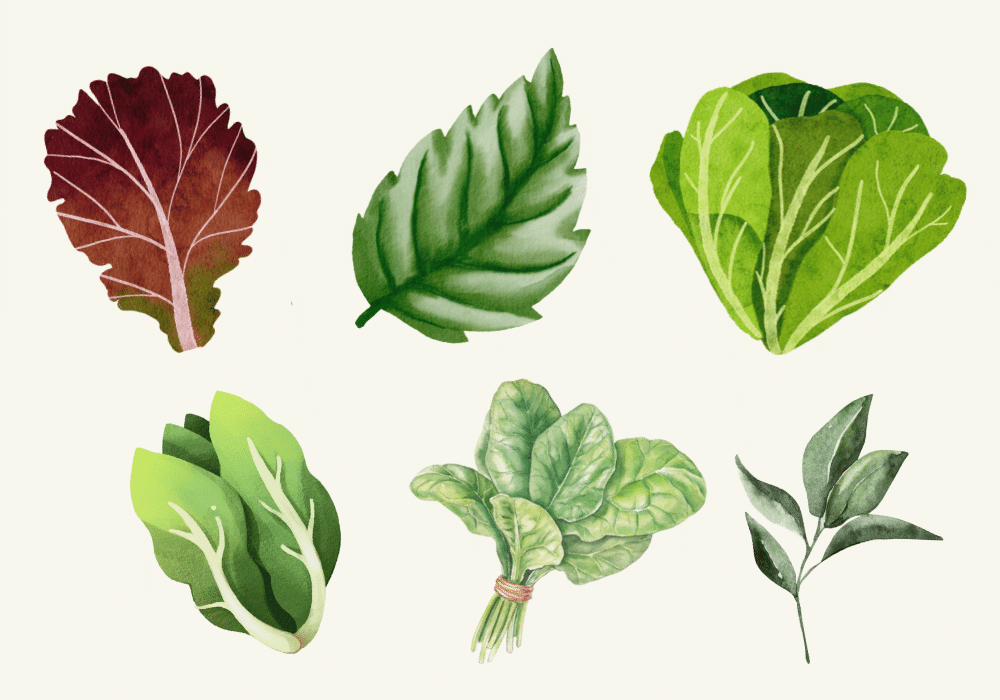
Turning Over New Leafs: 5 New Greens for Your Salad, Stir Fry and Stew
July 29, 2022 by Julianne Hart
Traditional “leafy greens”, “salad greens”, or simply “greens” are really just plant leaves eaten as a vegetable. There are several edible greens easily grown in the U.S. that don’t make it into American meals and dishes.
We’re here to show you how to liven up salads and dishes with five tasty greens you never knew you needed!
On a recent farm tour with the University of Virginia and national food service provider, Aramark, fifth generation farmer and owner of The Carter Farms, Michael Carter Jr., introduced chefs and sustainability staff to five underutilized greens to add to their menus.
1. Malabar Spinach
Also known as Indian spinach, Ceylon spinach, vine spinach, and climbing spinach, Malabar Spinach is a perennial native to India, Sri Lanka, and Indonesia.
This fast-growing plant is grown as an annual during the heat of summer. Use these leaves in place of spinach to add a slightly peppery and citrus zing to your next dish.
2. Red Hibiscus Leaves
We all know and love the hibiscus flower, but did you know its edible red leaves add a tart, lemony flavor and can be eaten raw or cooked?
Brighten up a summer salad with this delicious edible foliage. Native to Central America, hibiscus flourishes during hot, humid Mid-Atlantic summers. The most common method to cook red hibiscus leaves is to stir fry the leaves in small batches. Bonus nutrient powerup: red hibiscus leaves are rich in Vitamin C and thiamin.
3. Black Eyed Pea Leaves
While Black Eyed Peas, or Cowpeas, are grown for their edible beans, the iron and protein rich, mild tasting leaves of this plant are also edible. Plus, like other greens, Black Eyed Pea leaves are a great source of fiber. Try cooking Black Eyed Pea leaves in your own kitchen.
Cowpea farming is common in Kenya, other African countries, and Southeast Asia - and does just as well under a hot, full sun in the humid summers of Virginia.
4. Callaloo
This fast-growing, tall leafy green is from the amaranth family. Callaloo has a mild flavor and is best served cooked.
A Jamaican staple, we source our Callaloo from Nadine of Tallawah Farms in Princess Anne, MD. Jamaican-born and raised, Nadine farmed there for seven years before moving to Maryland. Try using Callaloo in Nadine’s irresistible One-Pot Callaloo Rice Recipe.
5. Sokoyokoto African Spinach or Nigerian Spinach
Said to be the most popular spinach in Nigeria, the greens from Sokoyokoto African Spinach have a lemony flavor when eaten raw or can be sauteed or steamed. Sokoyokoto African Spinach thrives in heat and is drought resistant. Try this flavorful green in African Spinach Stew.
The Green Leaf Climate Factor
These plants do well in full sun and warmer temperatures, an important factor with the projected increase of hot days per year for all regions of the United States. The Midwest and Appalachian regions are expected to see the largest increase. The USDA has created interactive maps to show the Climate Change Pressures in the 21st Century.
4P Foods works with farmers to understand how climate-related changes will impact their future farming protocols and how to adjust growing plans.